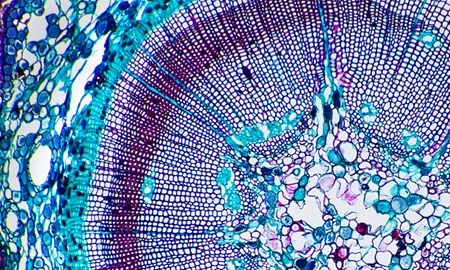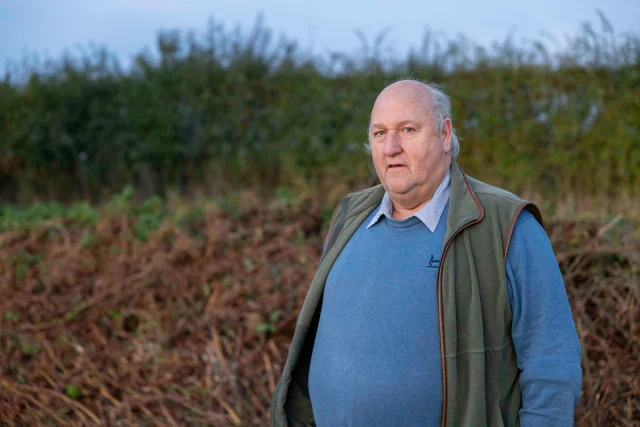Published on 10th March 2020
Disease Management
Biostimulants Explained: Your 2020 Guide

Wondering whether biostimulants can benefit disease control on your farm? We can help you get to grips with this emerging area in crop protection.
What are biostimulants?
Biostimulants are a wide and growing array of microbial and non-microbial compounds that can be applied to seed, plant or soil to enhance the growth of a crop.
How do biostimulants work?
Biostimulants work by stimulating plant nutrition processes independently of the product's nutrient content, improving nutrient use efficiency, stress tolerance, quality traits or the availability of confined nutrients in soil or rhizosphere.
Moving to a technically-driven market
Ultimately, biostimulants should boost crop yield. However, there are currently no specific guidelines for supporting evidence to back-up product claims and no harmony between countries. But, new EU legislation, due by 2022, should tighten up the requirements and help shift from a commercial to a technically-driven market, says John Haywood of Unium Bioscience.
“There needs to be greater honesty and transparency and if we make a claim, we ensure we can support it with independent data.”
He believes biostimulants will become increasingly important tools, but growers must understand their objective, trial them in large blocks on-farm and review their use in-season.
“Once you know why you are using them you can measure how successfully they perform.”
How are biostimulants being used?
A product such as Unium’s Scyon is a useful fungicide support tool, he claims. It supports crop health by increasing nutrient efficiencies within the plant.
Signalling compounds could help optimise yield too. One product maximises chlorophyll production, while another helps relocate increased carbohydrate production during the critical grain-fill period, he explains.
Mr Haywood recommends choosing products from companies with a proven track record of generating data and bringing products to market. Many won’t have years of data due to the infancy of the sector, but growers should expect peer-reviewed data, dose-response curves and data from different crops, timings and sites, particularly UK trials, he adds.
Mitigating stress
Biostimulants can help mitigate effects of stress, such as drought, cold, disease or herbicides, which cause the plant to respire more, burning up energy at the expense of photosynthesis, Yara’s Mark Tucker says.
“When a plant comes under stress it invariably ends up hitting yield or affecting that plant through poor utilisation of other inputs, particularly nitrogen.”
Yara’s Biotrac, a compound formulated from the seaweed Ascophyllum nodosum, has an available source of micronutrients, that when applied ahead of a stress event helps prevent the immediate respiration response. But timing can be a challenge especially with drought which is difficult to forecast, explains Mr Tucker.
Yara is looking at timings ahead of autumn herbicide applications to soften the impact of herbicide stress and aid even establishment. It is also examining key periods when yield is affected, at T1, and T2 in wheat, to protect the flag leaf and keep crop momentum going to final yield.
“We have seen excellent responses from autumn zinc applications with much healthier, cleaner plants coming into the spring. Zinc is important to the plants' defence mechanism. This demonstrates nutrition and biostimulants together can create a healthier plant with a level of self-defence against disease.”
Initial results from Lincolnshire trials last season at T1 recorded a 0.2 t/ha yield benefit in two of four sites. “The return on spend in these trials was 2:1, slightly down on where we’d like.
“We need to get better at knowing where products will perform.”
New biostimulant seed treatment options
Bayer, through its collaboration with Danish biological specialist, Novozymes, has launched two biostimulant seed treatments which can help increase cereal yields by establishing better rooting.
JumpStart and ProStablish are innovative biological products which complement Bayer’s seed treatmentportfolio.
JumpStart is a biological seed treatment containing two strains of the naturally occurring soil fungus Penicillium bilaiae. This sticks to and grows with plant roots, making soil phosphate more soluble and biologically available to plants, explains Bayer’s Guillermo Bort.
“It works with many nutrients but we focus on phosphorus because it is the limiting factor in cereal production. It is not a replacement for fertility; it helps plants make best use of applied nutrients.”
The product keeps working in the rhizosphere while the plant is growing, so growers can expect season-long activity, he notes.
Plant roots can only take up nutrients in the immediate root zone, which is where the second seed treatment comes in, which is co-applied with JumpStart and a single purpose seed treatment.
“ProStablish is a lipo-chitooligosaccharide (LCO); a key biologically-active signal molecule which stimulates spore germination of mycorrhizae fungi and colonisation of plant roots,” Mr Bort explains.
Mycorrhizal colonisation of plant roots increases functional root volume by developing hyphae and more root hairs, increasing the plant’s ability to explore soil and access nutrients.
Better rooting helps plants resist stress periods, such as drought, more efficiently.
“An extensive trial program across Europe and Ukraine, covering different regions, varieties and cropping has shown a positive yield response in 60% of trials which is very impressive for a biological solution.”
These results, from 94 locations over two seasons, delivered a 3.3% yield increase in winter wheat from using this biological solution with a single-purpose seed treatment (SPD) over the SPD alone.
Changing attitudes
Cotswold grower Andrew Bullock previously believed biostimulants were of dubious merit with variable effects. But, since trialling one last spring his attitude is changing.
He applied a biostimulant to a 5 ha block of first wheat Siskin with the T1, replacing chlorothalonil, which the remainder of the field received.
All other inputs were kept the same but it was a dry year on a drought-prone field, he notes.
“There was no difference visually between plots, but it yielded a little bit more and the biostimulant plot had a higher moisture content, 13% versus 12.3%, which came from the crop being kept alive longer.”
Although it is difficult to draw conclusions from this unreplicated trial, Mr Bullock believes it is worth another look, especially as chemistry is being taken away.
“Reluctantly it has piqued my interest. I had assumed it was pure snake oil, but the results of this one-year trial mean it merits a more serious and positive look.”



